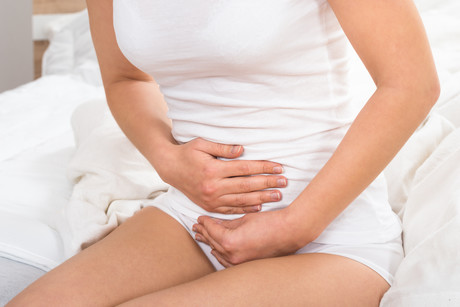Hysterectomies overly used in Australia

Women should be offered less invasive treatments before considering a hysterectomy, according to the first nationally agreed standard of care for women experiencing heavy menstrual bleeding.
Heavy menstrual bleeding affects an estimated 1 in 4 women of reproductive age. Despite being common, it is also under-recognised, and can significantly reduce a woman’s social, emotional and physical quality of life. It causes considerable disruption to women’s lives lasting several days each month, with some women experiencing associated pain. Sometimes the cause of the bleeding, such as fibroids, can be identified, but for about 50% of women it cannot.
Figures strongly suggest many Australian women are having hysterectomies for heavy menstrual bleeding rather than less invasive treatments. These include a hormone-releasing intrauterine device (IUD) or a surgical technique called endometrial ablation, which reduces the bleeding by removing the lining of the uterus.
Specialists aren’t always necessary
The new Heavy Menstrual Bleeding Clinical Care Standard, recently launched in Melbourne by the Australian Commission on Safety and Quality in Health Care, says most women with heavy menstrual bleeding can be effectively cared for by their GP. Referral to a specialist may be warranted in some situations — such as if the woman has uterine fibroids or polyps, or in less common situations where cancer is suspected, if symptoms do not resolve with initial treatments or if the woman would prefer surgery.
University project officer and mother-of-one Hayley Harrison, 38, from Perth, experienced heavy menstrual bleeding all her life and said a period lasting eight days is “a good month”, while 10 days is more usual. She estimates she has had 10–20 pelvic ultrasounds and spends $40 on sanitary products for every period.
“I presented to doctors because of the pain associated with heavy menstrual bleeding,” she said. “None of them really asked how heavy my period was. I didn’t know that changing a tampon every hour for at least three to four days was abnormal.
“It wasn’t until I went to see a different doctor — she asked these questions that I’d never been asked by a doctor before. She said ‘You really do have very, very heavy periods — this is really not normal.’”
Associate Professor Kirsten Black, a Sydney gynaecologist who chaired the commission’s Topic Working Group that compiled the new standard, said GPs were ideally placed to identify affected women and manage most of the problems, with referral to a specialist only necessary in some cases.
“Sometimes a hysterectomy is required, but the clinical care standard is seeking to ensure that women are offered the spectrum of available treatments and options,” she said.
Australian rate of hysterectomies higher than average
Commission Senior Medical Advisor Professor Anne Duggan said Australia had high rates of hysterectomy relative to the UK and New Zealand — and there was also strong variation within Australia, with stark differences between regional and metropolitan areas.
“This clinical care standard was developed after the commission’s Australian Atlas of Healthcare Variation found the rate of hospital admissions for hysterectomy and endometrial ablation combined in 2012–13 was 5.2 times as high in the local area with the highest rate compared to the area with the lowest rate,” Professor Duggan said.
“The commission’s second Atlas, released in June this year, found the gap was even wider — 6.6 times as high between different local areas — for hysterectomy admissions alone in 2014–15. Admissions for endometrial ablation were nearly 21 times as high between different local areas.
“Hysterectomy used to be one of the few options for women with heavy menstrual bleeding, but there are now several less invasive treatment options. These differences in admission rates for hysterectomy suggest that the full range of options is not being used across the country — and may indicate women are not being informed about all the options.”
New standard widely endorsed
The Heavy Menstrual Bleeding Clinical Care Standard has been endorsed by a range of medical and healthcare organisations, including the Royal Australian and New Zealand College of Obstetricians and Gynaecologists, the Australian College of Rural and Remote Medicine, the Royal Australian and New Zealand College of Radiologists, the Rural Doctors Association of Australia and the Australian College of Nursing.
The clinical care standard, along with separate fact sheets for consumers and for clinicians, can be found on the commission’s website.
Medical logistics provider gains on-brand hi-vis workwear
An Australian uniform provider has created a custom-designed red hi-vis range for a medical...
Rapid healthcare IT deployment helps private hospital open
A new Melbourne private hospital opened this month after implementing its core patient...
Budget: AMA welcomes investment but calls for system reform
In a post-Budget 2025–26 statement, the Australian Medical Association welcomed investment,...









